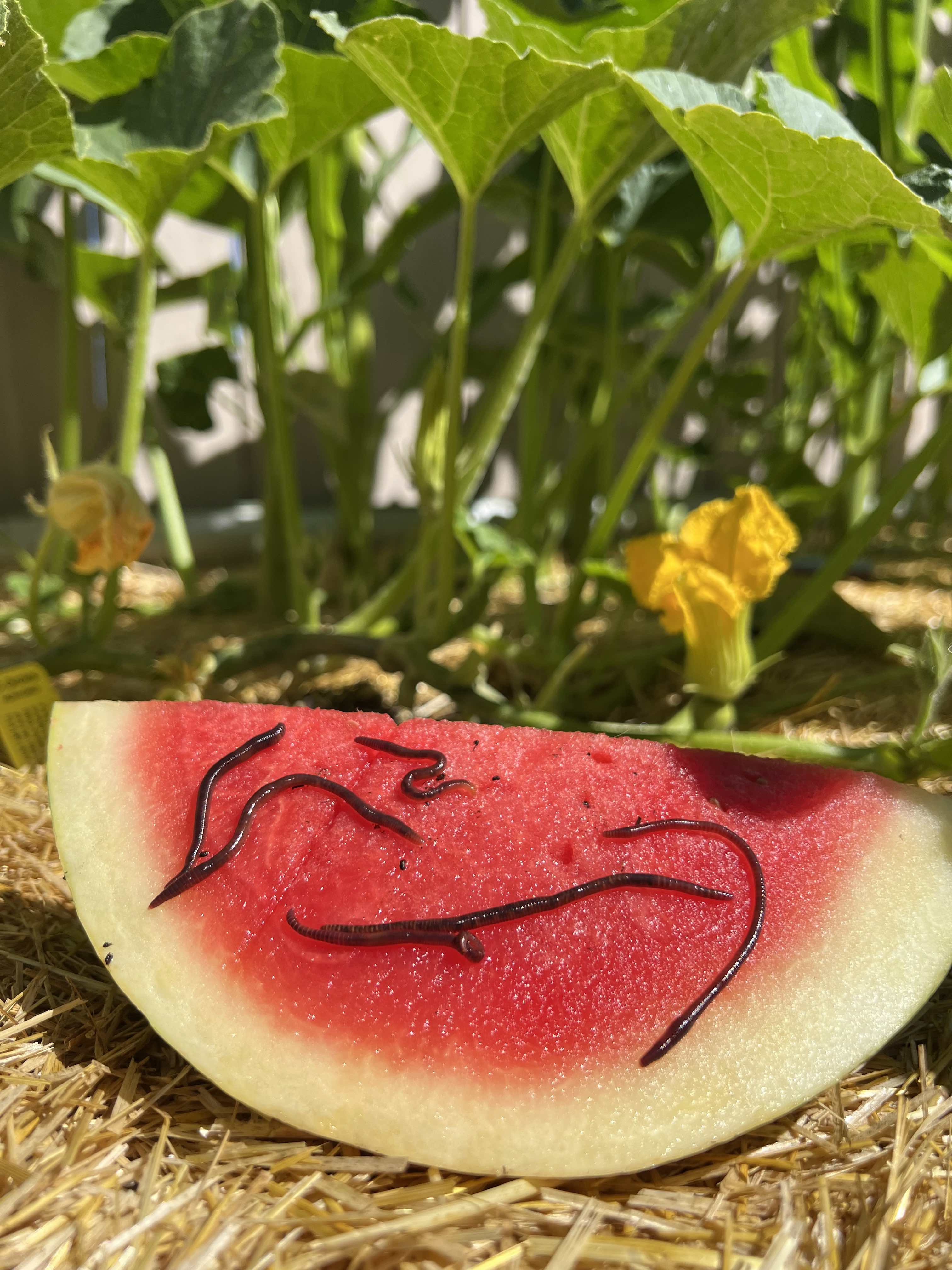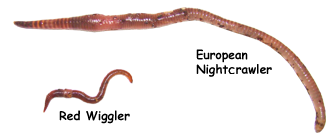Red Wiggler Worms - Perfect for Vermicomposting and Dirt Enrichment
Wiki Article
Red Wiggler Worms Demystified: Opening the Secrets of Vermiculture for Greener Living and Nutrient-Rich Dirt
In the realm of sustainable practices for enhancing dirt top quality and advertising eco-conscious living, red wiggler worms play a pivotal yet frequently overlooked function. Red Wiggler Worms. Understanding the ins and outs of caring for these worms, optimizing their setting, and using their spreadings can lead to a greener lifestyle and much healthier soil for plants to grow.The Duty of Red Wiggler Worms
Red Wiggler worms play an important role in composting systems by successfully breaking down raw material into nutrient-rich castings. These starved eaters eat a variety of natural products, such as kitchen scraps, backyard waste, and paper products. As they feed, the worms' digestive system processes damage down the raw material right into a penalty, dark, and nutrient-dense material recognized as worm spreadings or vermicompost.The spreadings created by Red Wiggler worms are extremely helpful for dirt wellness and plant growth. They are abundant in essential nutrients like potassium, phosphorus, and nitrogen, which are crucial for supporting healthy and balanced plant growth. In addition, worm castings include advantageous microbes and enzymes that help enhance soil framework, boost water retention, and enhance nutrient uptake by plants.
Benefits of Vermicomposting

Furthermore, vermicompost, the nutrient-rich final result of vermicomposting, works as an exceptional organic fertilizer and dirt conditioner. It improves soil structure, boosts soil oygenation, and boosts soil dampness retention. These residential or commercial properties add to healthier plants with more powerful origin systems and better resistance to pests and diseases. Vermicompost likewise improves the soil with essential nutrients like nitrogen, phosphorus, and potassium, advertising plant growth and overall dirt fertility.
Additionally, vermicomposting supports sustainable horticulture techniques by providing a all-natural and chemical-free alternative to synthetic fertilizers. Red Wiggler Worms. This eco-friendly technique not only improves the dirt but also assists reduce dependence on damaging chemicals, promoting a greener and much more lasting method of gardening
Establishing a Worm Bin
When establishing a worm bin for vermicomposting, appropriate arrangement is critical to make sure the success of the composting procedure. The very first step in establishing a worm bin is choosing a suitable container. This can be a plastic container or wooden box that provides enough room for the worms to relocate around and has appropriate drainage holes to stop waterlogging. Next, a bed linen material such as shredded newspaper, cardboard, or coconut coir ought to be contributed to the container. This bedding supplies a comfy setting for the worms and assists keep dampness levels.After including the bed linen, present the red wiggler worms to the bin. The worms need to then be supplied with food scraps such as fruit and vegetable peels, coffee premises, and eggshells.
Routinely monitor the dampness degrees and temperature level in the worm container to guarantee ideal problems for the worms. With proper setup and upkeep, the worm container will efficiently transform natural waste right into nutrient-rich garden compost for your plants and yard.
Gathering Worm Castings
To efficiently gather nutrient-rich worm spreadings from your vermicomposting system, a systematic harvesting method is crucial. There are a couple of vital steps to follow to guarantee an effective procedure when it comes time to harvest the worm spreadings. Quit including fresh food scraps to one side of the worm bin for a pair of weeks before harvesting. This motivates the worms to move to the side with fresh bed linens and food, making it easier to scoop out the spreadings from the opposite side.
Troubleshooting Common Issues
Determining and dealing with common obstacles that may occur during the vermicomposting procedure is critical for maintaining a healthy and efficient worm bin. One common problem that vermicomposters encounter is overfeeding. Including excess food scraps can lead to an accumulation of moisture and acidity in the worm bin, potentially hurting the worms. To stop this, feed the worms in small amounts, ensuring that the food scraps are sufficiently damaged down prior to adding extra. One more concern is undesirable smells emanating from the worm container. Foul scents suggest anaerobic problems, generally brought on by helpful site overwatering or inadequate air flow. To remedy this, change the wetness degrees by adding completely dry bed linens products like shredded paper or cardboard and rise oygenation by turning the bed linens regularly.
Additionally, if the worm population is declining or the worms show up unhealthy, it can be due to environmental stress factors such as severe temperature levels or pH degrees. Keeping track of these aspects and making required adjustments is crucial for the well-being of the worms. By repairing these typical problems promptly, vermicomposters can make certain a smooth and successful vermicomposting process while keeping a growing worm population.

Final Thought
In verdict, red wiggler worms play a critical function in vermiculture by damaging down natural issue into nutrient-rich dirt. Setting up a worm container is essential for effective vermiculture, and harvesting worm castings provides valuable garden compost for horticulture.As they feed, the worms' digestive processes damage down the natural issue into a fine, dark, and nutrient-dense product known as worm castings or visit the site vermicompost.
The spreadings generated by Red Wiggler worms are very valuable for soil health and wellness and plant development. Including excess food scraps can lead to a build-up of wetness and acidity in the worm bin, potentially hurting the worms.Furthermore, if the worm populace is decreasing or the worms show up unhealthy, it could be due to ecological stressors such as severe temperature levels or pH degrees. Setting up a worm bin is crucial for successful vermiculture, and collecting worm castings gives beneficial compost for gardening.
Report this wiki page